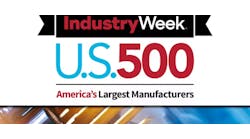QUESTION: Our company has grown as a job shop, and we primarily do metal fabrication work for a myriad of companies here in North Texas. We are starting to manufacture items that straddle the fence between "batch build" and "continuous flow" mentality. We are relatively busy and profitable, which is a good thing. In an effort to raise the bar for us, we are beginning our journey into lean manufacturing and implementing mindsets such as 5S. Can you suggest strategies that will help us accelerate our journey and what we can do to help the "old-timers" loosen their grasp of the mindset of "We've always done it this way"?
ANSWER: This question is a good follow on topic from last time except that the tone is different and very encouraging! This is a business on the move in a positive direction, so my response will also be more positive.
First of all, every company that is serious about embarking on a continuous improvement journey by whatever name will deal with significant barriers -- and it won’t just be the “old-timers” as you suggest. There are powerful paradigms in every business that will have to be overcome by all.* That is why starting with education and training all employees about the new strategy is of utmost importance. Explain why you’re starting the journey and what’s in it for them. Tell the story of why it’s important to the business and to the long-term job security of all. For example:
“If we aren’t improving faster than our competition, then we are falling behind and we can’t afford to take that risk. Your leaderships’ roles will be changing as will every person’s in the business over a period of time. Leaders will spend more time communicating and soliciting your ideas of how we can make the business and operating conditions better. We will be providing the appropriate and necessary training so that all of us can understand our roles as we learn to think, work and behave differently, often working in teams. We need to learn simple problem-solving tools so more of us can help with the improvements we seek.
We plan to engage our hourly folks more directly and get your valued input -- drawing from your experience and your observations and helping to eliminate all the reasons why you have a bad day. Most of the time, it’s because someone in management has failed you. We are committed to changing that. We want to prepare everyone to think, work and behave differently as we strive for excellence; and for building a culture where all employees are expected to be involved/engaged in helping us to make the business better and to improve working conditions for all.”
Obviously, lots of additional detail is required, but you get the picture. As implied earlier, please don’t single out the “old timers” in this case. As the plant manager, simply elevate your expectations for everyone! Educate away the ignorance; train them up on the tools they need to work differently and more effectively. Put a communications plan together to keep the new message in front of the workforce 24/7.
A 5S Caution
One caution regarding the reader’s reference to start by “implementing mindsets such as 5S”: I’m aware of many factories that started the journey with 5S because it seemed to be a quick way to get the masses involved early in the journey. It can be, if done properly. First make certain that the supervisors/team leads fully understand the breadth of 5S. Otherwise it’ll turn into a housekeeping project, and the hourly folks won’t see the point or understand their boss becoming anal about things that never mattered before. Discuss the discipline necessary to achieve and sustain excellence and how it’s the beginning of the culture change you seek. It may depend upon how well 5S is started. It’s standard work. It’s the new way we do things now until someone gets a better idea and then we’ll change the standard. If we aren’t disciplined enough to always put the tool back where it goes, then how will we ever be disciplined enough to achieve and sustain anything else?
Every square inch of the property, inside and out must have someone’s name on it as being accountable to always meeting the standards that have been set -- just be sure you’ve had the involvement of everyone in each supervisor’s span of control because hourly inputs should be a major voice in the design of the 5S process. As management gets their act together, they are starting the process of having hourly people understand they are accountable for their work and the results of the team.
Recognition doesn’t cost much but is as valuable as gold to changing culture.
Importantly, 5S is also the beginning of visual management in the factory -- something that we want to be pervasive plantwide as we continue on our journey to excellence. The stakes here are far bigger than just making sure everyone knows how to use a broom. Along the way your hourly people are learning to work together as a team member and are beginning to understand the new culture being created as they learn the new way to think, work and behave.
Also remember to COMMUNICATE, COMMUNICATE, COMMUNICATE to reinforce the learning and to provide recognition to those who are doing it the new, correct way! Bring in a box of donuts. Buy the team T-shirts with their team name on it and/or their own to recognize their progress. Smile and say, “Thank you” as you shake each person’s hand. Recognition doesn’t cost much but is as valuable as gold to changing culture.
With successful pilots on 5S, it’s time to select an area for a manufacturing cell or value stream flow as soon as possible. Purposefully select an area where the hourly people are working well together and are interested in learning “what’s next?” Involve them in the design of the process flow. Teach them how to read a value stream map and to understand line balance so they know when they have “direct-on-indirect” time to do their indirect duties such as 5S, safety audits, etc., as the team evolves.
By the time you have a successful pilot there will be a line of other workers who want to learn to work “the new way,” and from there it’s off to the races.
Just make sure the leaders are all staying out front with their own education and training and coaching so they are setting the example the rest of the employees need. The leaders should have already changed how they think, work and behave by the time you complete the pilot. If they haven’t changed by then, leadership is either remiss in the education, training and coaching of their own or it’s time you find some new right-minded leaders to replace them. Your hourly employees deserve no less.
* I’m reminded of the 1996 book by Kriegel and Brandt, Sacred Cows Make the Best Burgers, Warner Books. Consider selecting a process that is cumbersome and annoying to the masses, blow it up and make it customer friendly using the new tools. The word will spread like wildfire.



